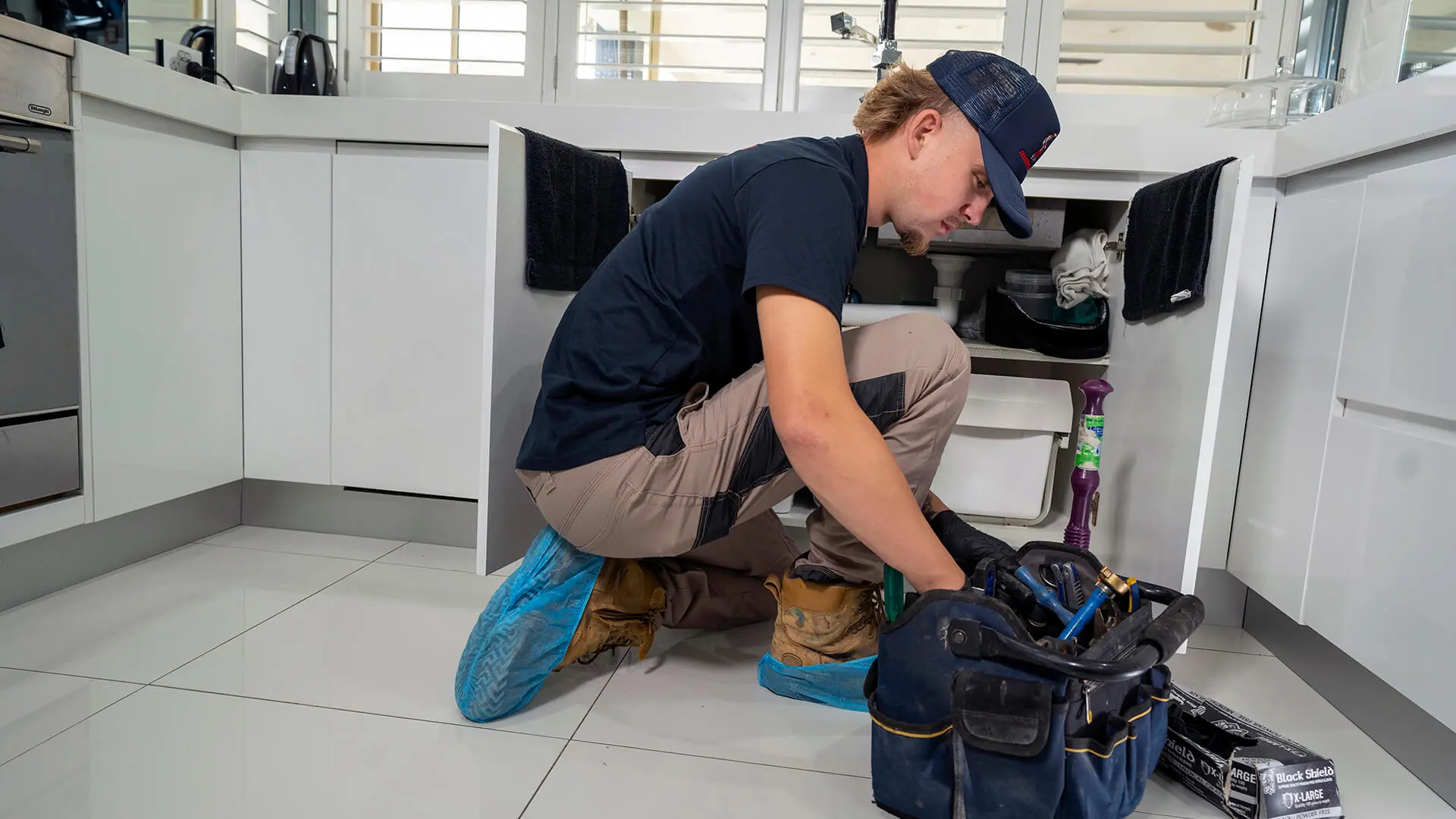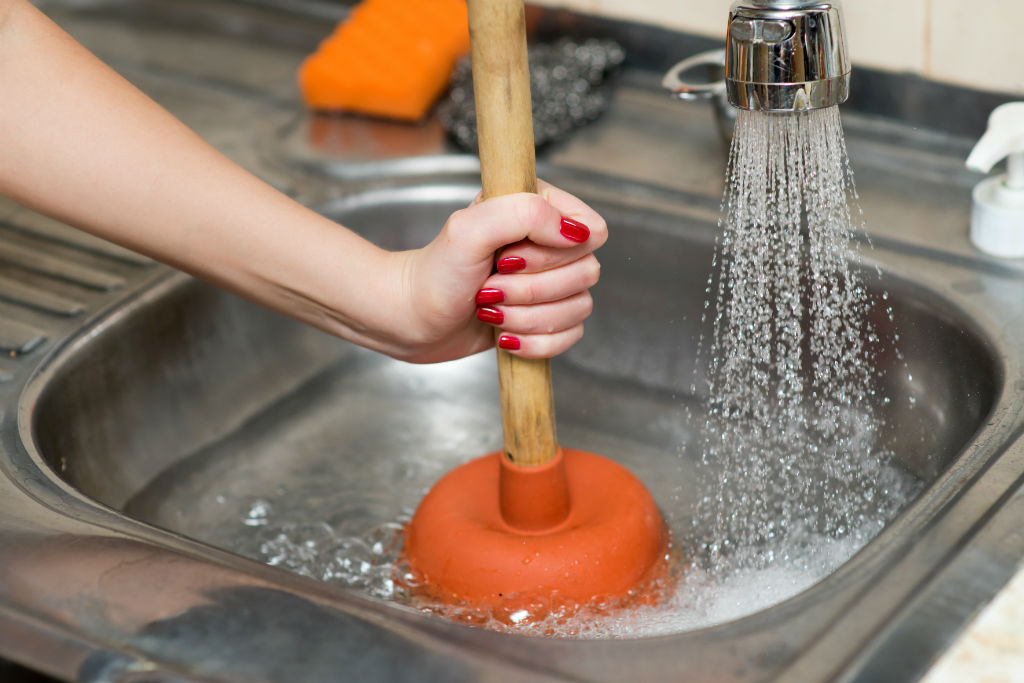Reliable Techniques For Repairing A Slow-Draining Sink
Reliable Techniques For Repairing A Slow-Draining Sink
Blog Article
Everyone has their private conception involving 4 Tips to Fix a Slow Draining Sink.

Introduction
We've all existed: You're cleaning your teeth or washing your hands, and you notice the water merging in the sink. Instead of promptly swirling down the tubes, it remains, turning your once-refreshing early morning regimen right into a mini overload scene. A slow-draining sink isn't simply aggravating; it's typically an indicator of larger plumbing issues lurking under the surface area. Fortunately is that most slow-draining sinks can be taken care of with a little knowledge, a couple of standard devices, and some patience. Prepared to tackle this project head-on? Let's roll up our sleeves and dive right in.
Comprehending the Root Causes Of a Slow-Draining Sink
Prior to you begin poking around in your pipelines, it assists to understand what may be triggering the slowdown. Understanding the origin makes it less complicated to pick the right repair.
Devices and Materials You'll Require
The right devices make all the difference. The good news is, you won't need a totally equipped plumbing's van to finish the job.
Step-by-Step Guide to Dealing With a Slow-Draining Sink
Now, let's get into the nitty-gritty. This detailed process will certainly guide you with straightforward methods to recover your sink's drainage.
Step 1: Get Rid Of and Clean the Stopper
Typically, the stopper (that tiny plug you push down to block water) is the very first wrongdoer. Remove it carefully and clean off any type of hair or substance entraped around its base. Wash it thoroughly before putting it back in place.
Step 2: Utilize a Bettor to Remove Particles
Got that bettor all set? Placement it over the drainpipe and give it a couple of company pumps. The concept is to create suction that can loosen any type of obstruction. If you see littles particles floating up, you get on the best track.
Step 3: Attempt a Drainpipe Serpent or Cable Hanger
If the plunger does not suffice, it's time to draw out the drain serpent. Delicately feed it into the drain and spin as you go. You could feel some resistance-- that's likely the obstruction. Keep turning and pulling till you remove the obstruction. If you do not have a drain serpent, an aligned cord hanger can work in a pinch.
Step 4: Use a DIY Drain Cleaner
A natural cleaner made from baking soda and vinegar can break down residual gunk. Pour half a mug of cooking soda into the drainpipe, complied with by half a mug of vinegar. Let it fizz for about 15 mins, then flush with warm water. This chain reaction typically does marvels for minor clogs.
Step 5: Reconstruct and Check the Sink
Placed every little thing back with each other and run the tap. Does the water currently swirl away at a commendable rate? If yes, offer on your own a pat on the back. If not, don't misery-- there are still a couple of even more tricks up your sleeve.
Important Tools for Do It Yourself Fixes
A bettor is your go-to beginning point. A small, sink-sized bettor develops suction that can remove small clogs. For more consistent obstructions, a drain serpent (often called a plumbing's auger) functions marvels. A set of handwear covers, a flashlight, and perhaps a pair of protective goggles are additionally useful.
Recommended Cleaning Solutions
Light dish soap and warm water can aid break down greasy accumulation. A mixture of baking soft drink and vinegar is a time-tested natural remedy, and chemical cleaners provide a more eco-friendly method. Maintain chemical drainpipe cleansers as a last resort, as they can be severe on your pipes.
Common Offenders Behind Slow Drain
So, what's obstructing points up? Usually, it's a blend of everyday particles-- think hair, soap residue, toothpaste deposit, and leftover food fragments. In time, these tiny bits build up and cling to the pipe walls, progressively tightening the passage and making it harder for water to travel through. Sometimes, mineral deposits from difficult water can also contribute to the substance, creating the perfect storm for persistent clogs.
When is it Time to Do Something About It?
If you see the water draining slower than common, it's a great idea to interfere faster rather than later on. Waiting also long might lead to complete obstructions, undesirable odors, or perhaps pipe damage. If the water takes greater than a few secs to clear out after switching off the tap, consider it a red flag and prepare yourself to place on your DIY hat.
Security First: Preventative Measures and Prep work
Before you launch into unclogging setting, think about security. You're dealing with potentially dirty water and debris, so slip on a pair of gloves. If you're utilizing chemical cleaners, ensure the space is well-ventilated and comply with the guidelines on the label.
Protective Gear and Workspace Setup
Put down some old towels or rags around the sink area to capture splashes. Clear away any products that might enter your method, like soap dispensers or toothbrush holders. Make sure you have good illumination-- get hold of a flashlight if required.
Different Approaches for Stubborn Clogs
Not all blockages are produced equal. If your sink still declines to cooperate, think about these alternate services.
Sodium Bicarbonate and Vinegar Approach
We already discussed this, yet it deserves noting once again. This mild, environment-friendly approach is much safer than chemical cleansers and frequently rather efficient.
Chemical Drainpipe Cleansers
Enzyme-based cleansers make use of all-natural bacteria to digest organic matter. They're an outstanding option if you're aiming to stay clear of rough chemicals. Simply bear in mind, they might take a bit longer to function their magic.
Chemical Drainpipe Cleansers: Benefits And Drawbacks
Chemical cleaners can blow up via tough blockages quickly, yet they're not without disadvantages. They can generate warmth and fumes, damages pipes if utilized exceedingly, and pose environmental risks. Use them moderately, and always follow the instructions carefully.
Safety Nets to Maintain Your Sink Flowing
Prevention is the best cure. By taking on a couple of easy practices, you can keep your sink from reducing in the first place.
Regular Cleansing Practices
Clean down the sink container and component location on a regular basis. Get rid of hair or food fragments prior to they have a chance to wash down the drain.
Avoiding Damaging Substances Down the Drain
Think twice prior to disposing coffee premises, oil, or coarse vegetable scraps down the sink. These perpetrators hold on to pipe walls, producing clogs over time.
Routine Upkeep Checks
Set up a fast monthly evaluation. Run hot water with the sink for a few minutes, focusing on the circulation. If it seems slow, act quickly prior to it becomes a full-on obstruction.
When to Call an Expert Plumbing Technician
In some cases, no matter just how hard you attempt, that obstruct just will not move. That's when it's time to bring in the pros.
Indicators That Indicate a More Severe Concern
If your sink drains gradually regardless of multiple efforts, or if you discover water supporting in various other fixtures (like your shower or commode), you might have a more serious pipes issue lurking deeper in the system.
Balancing DIY Initiatives with Professional Assistance
While DIY can save you cash and use a feeling of achievement, there's no pity in calling a specialist. An expert plumber can analyze your whole plumbing setup, ensuring there's no underlying damages or long-term trouble that might cost you much more later on.
Comparing Costs and Long-Term Solutions
Before choosing, think about the big picture. A low-cost, quick fix could fix the trouble temporarily, but buying a much more irreversible option could conserve you cash and anxiety in the future.
Considering the Expenses of DIY vs. Specialist Fixes
DIY solutions usually cost little greater than the price of a plunger or a bottle of cooking soft drink. Expert solutions, on the other hand, come with a cost however may stop repetitive issues and costly repair services later on.
Buying Quality Fixtures and Upgrades
If your sink's design contributes to regular blockages, it could be worth updating to higher-quality components or altering the pipes format. Consider this a financial investment in your house's functionality and comfort.
Conclusion
A slow-draining sink can feel like a small irritability, but it's typically an indication that your plumbing needs a little tender loving care. By understanding the root causes, using the right tools and methods, and committing to simple safety nets, you can maintain your sink streaming easily. And when all else fails, never ever think twice to employ a specialist-- your home's plumbing deserves the investment in treatment and upkeep.
4 Tips to Fix a Slow Draining Sink
Removing the Pop-Up
This is a great place to start when it comes to troubleshooting a slow draining sink. If your sink has a pop-up, carefully take it out and remove debris that has built up around the tool. This will also allow you to see if there are any significant blockages in the drain that you can pull out on your own to help clear up the issue.
Use a Zip-It Tool
Like a snake for a large drain, a zip-it tool helps clear out any debris or hair from a sink drain. A tool like this can be used with a drain that pops out or not as it s thinner than most snake-like tools.
Use a Drain Cleaner
Whether making an at-home cleaner or buying a solution at the store, this is a common fix many turn to when it comes to a slow draining sink. There are several options available for purchase at local supermarkets, but for those who prefer to create their own solution, one of the most common is the following.
How to Unclog a Drain Naturally
Pour boiling water down the drain Pour cup of baking soda down the drain Pour cup of vinegar down the drain Wait 10 minutes Pour boiling water down the drain again Turn on the hot water faucet to clear out the solution Use a Plunger
As a worst-case scenario option, a plunger may be a good option for those who are still struggling to get debris out of their drain. This could be especially useful if there is a large item that you suspect may be significantly stuck down the drain.
https://www.abaileyplumbing.com/blog/2021/august/4-tips-to-fix-a-slow-draining-sink/

I was introduced to that write-up on 7 Ways To Fix A Slow-Draining Sink Before You Call A Plumber from an associate on our other web blog. Sharing is caring. Who knows, you could be doing someone a favor. I cherish your readership.
This Resource Report this page